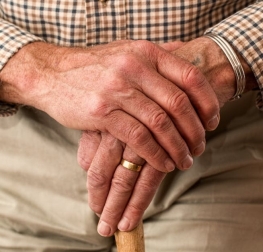Our Services
Movement Disorders and DBS Surgery

Overview
Movement disorders are neurological disorders characterized by involuntary movement, such as trembling and uncontrollable muscle contractions. They occur when changes in the brain cause either abnormal, excessive, involuntary movements or slower, delayed movements. For these people, even simple activities like dressing, dining or writing can be challenging.
There are many movement disorders that can affect people including:
- Blepharospasm
- Chorea
- Torticollis and other dystonias
- Essential tremor and other tremor disorders
- Gait disorders
- Huntington’s disease
- Parkinson's disease, Dementia with Lewy Bodies (DLBD), Progressive Supranuclear Palsy (PSP), Multiple System Atrophy (MSA), and related syndromes
- Restless legs syndrome
- Tourette’s syndrome
- Wilson's disease
- Spinocerebellar ataxias
Early intervention is the key
Early diagnosis and intervention for dementia is critical because it provides an opportunity to slow the progression of the disease by implementing the latest available treatment options.

At Citi Neuro Centre, our specialists have the most advanced expertise and knowledge to provide patients with the best medical and surgical treatment as well as additional services. In order to effectively control the symptoms of movement disorder, it is imperative that treatment of the patient starts when the disease is in its initial stage. That is why timely and precise confirmation of the diagnosis is important.
Our Movement Disorders program offers a comprehensive range of services, from diagnostic testing and innovative treatments to rehabilitation and follow-up support.
Following services are provided to effectively control movement disorder in a patient:
- We have the latest technology to accurately confirm the diagnosis of various types of movement disorders like dystonia, choreoathetosis, tremor and Parkinsons disease.
- If and when drug therapy fails to control the symptoms of patients suffering from Parkinson’s disease, intractable Tremor and Dystonia, surgical options are provided such as deep brain stimulation therapy (DBS). In DBS, neurosurgeons place electrodes deep in the brain which are connected to a pacemaker-like device implanted under the skin. The device sends regular electrical impulses to the target areas of the brain to correct misguided signals in the brain
- Botulinum toxin (Botox) therapy for spasmodic torticollis and other dystonias, including limb dystonias, orofacial dystonias and spasmodic dysphonia
- Rehabilitation programs are provided to patients of movement disorder to help them perform daily functions and lead a good quality life.